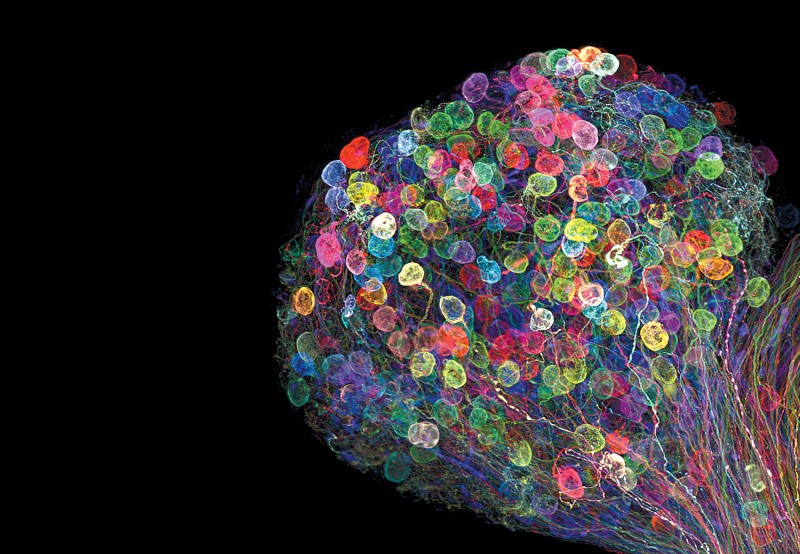每日外闻87
长期尼古丁暴露会增加戒烟期对尼古丁奖赏的敏感性,这可能会促进戒烟者的复发,但导致这种现象的神经分子适应尚不清楚。有趣的是,长期使用尼古丁可诱导中皮质边缘奖赏通路中烟碱型乙酰胆碱受体(NAChRs)功能上调,这种上调潜在地将与药物敏感性增加相联系。在腹侧被盖区(VTA),含有β4亚基的nAChRs(α4* nAChRs))的功能上调仅限于GABA能神经元。为了验证α4*nAChRs在这些神经元中功能性表达增加会调节尼古丁奖赏行为的假设,我们设计了一个依赖Cre重组酶的基因表达系统,选择性地表达了4个含有“功能获得”突变的nAChR亚基[在9’位置的亮氨酸突变为丝氨酸残基(Leu9′Ser))]。与对照动物相比,在VTA GABA能神经元中表达Leu9’Ser α4 nAChR亚基的小鼠(Gad2^VTA^:Leu9’Ser小鼠)中,次级奖励的尼古丁剂量足以选择性激活VTA GABA能神经元并引起急性运动不足/减退,随后的尼古丁暴露引起对该作用的耐受。在条件性位置偏爱实验中,低剂量的尼古丁就足以导致Gad2^VTA^:Leu9’Ser小鼠中显着的位置偏爱, 而在此剂量的尼古丁下对照老鼠没有显著的位置偏好。总之,这些数据表明,VTA GABA能神经元中α4* nAChR的功能上调增加了对尼古丁奖赏的敏感性,并提示了在GABA能VTA神经元中特异表达的nAChR亚型可作为戒烟治疗的分子靶点。
Chronic nicotine exposure increases sensitivity to nicotine reward during a withdrawal period, which may facilitate relapse in abstinent smokers, yet the molecular neuroadaptation(s) that contribute to this phenomenon are unknown. Interestingly, chronic nicotine use induces functional upregulation of nicotinic acetylcholine receptors (nAChRs) in the mesocorticolimbic reward pathway potentially linking upregulation to increased drug sensitivity. In the ventral tegmental area (VTA), functional upregulation of nAChRs containing the α4 subunit (α4* nAChRs) is restricted to GABAergic neurons. To test the hypothesis that increased functional expression of α4* nAChRs in these neurons modulates nicotine reward behaviors, we engineered a Cre recombinase-dependent gene expression system to selectively express α4 nAChR subunits harboring a “gain-of-function” mutation [a leucine mutated to a serine residue at the 9’ position (Leu9’Ser)] in VTA GABAergic neurons of adult mice. In mice expressing Leu9’Ser α4 nAChR subunits in VTA GABAergic neurons (Gad2(VTA):Leu9’Ser mice), subreward threshold doses of nicotine were sufficient to selectively activate VTA GABAergic neurons and elicit acute hypolocomotion, with subsequent nicotine exposures eliciting tolerance to this effect, compared to control animals. In the conditioned place preference procedure, nicotine was sufficient to condition a significant place preference in Gad2(VTA):Leu9’Ser mice at low nicotine doses that failed to condition control animals. Together, these data indicate that functional upregulation of α4* nAChRs in VTA GABAergic neurons confers increased sensitivity to nicotine reward and points to nAChR subtypes specifically expressed in GABAergic VTA neurons as molecular targets for smoking cessation therapeutics.
See you tomorrow











